In the sweltering summer of 2017, with more people seeking relief from the heat indoors, watching movies online became increasingly popular. Taking advantage of this trend, Xiaomi launched its Mi Family Laser TV in July, marking its debut in the projection market. This move was accompanied by the introduction of the world's first "pure business intelligence micro-investment," which stirred up considerable attention in the market. These developments have injected fresh energy and optimism into the projection industry.
At a press event titled "The Little Whale Club" held on July 12, Zhang Weidong, Vice President of the micro-whale brand, expressed his belief that this marks the beginning of a new era in smart projection. He emphasized that a thriving industry attracts new brands while encouraging existing ones to innovate. However, he also noted that this influx of innovation could complicate the market, leading to heightened competition and consumer choice based on qualitative improvements.
The "Dispute" Era of Projection
The arrival of Xiaomi's laser TV has been welcomed by brands such as Microwhales and Hisense. Xiaomi, as one of China's most popular internet brands, boasts hundreds of millions of fans. The concept of laser televisions has seen a boost thanks to Xiaomi's involvement, which seems to be promoting the industry's overall value and public awareness.
However, when looking at the product specifics, Xiaomi might fall short this time around. Many in the industry have remarked that Xiaomi's "low price" at 9999 yuan is misleading—it's essentially a low-brightness projector using a 0.47 light valve chip, marketed as a "miniature smart projection." In comparison, Micro Whale F1 offers similar brightness at a much more affordable price of 3000 yuan. Therefore, Xiaomi's claim to cost-effectiveness in the projection industry remains unconvincing.
 Mi Jia Laser TV
From the essence of this new product, it bears more of an ODM imprint and lacks any truly unique technology from Xiaomi. Meanwhile, Micro Whale, also with strong internet TV DNA, quickly ventured into "projection" and each product showcases distinct features, whether large or small. For instance, the Micro Whale Rubik’s Cube is the industry’s first "1-second autofocus" smart projection device, achieving a breakthrough in "mobile portability." Its unique parallelogram design also marks the first time a micro smart projection product has won the prestigious iF design award. Micro Whale F1, seemingly straightforward, boasts the highest brightness level in the industry, with unmistakable quality and craftsmanship. This distinction highlights the varying "industrial chain" capabilities.
Mi Jia Laser TV
From the essence of this new product, it bears more of an ODM imprint and lacks any truly unique technology from Xiaomi. Meanwhile, Micro Whale, also with strong internet TV DNA, quickly ventured into "projection" and each product showcases distinct features, whether large or small. For instance, the Micro Whale Rubik’s Cube is the industry’s first "1-second autofocus" smart projection device, achieving a breakthrough in "mobile portability." Its unique parallelogram design also marks the first time a micro smart projection product has won the prestigious iF design award. Micro Whale F1, seemingly straightforward, boasts the highest brightness level in the industry, with unmistakable quality and craftsmanship. This distinction highlights the varying "industrial chain" capabilities.
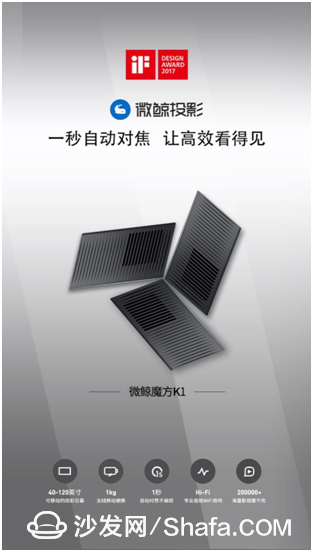 Little Whale Cube K1
Xiaomi’s entry into this market can be likened to a roller-coaster ride—high expectations but underwhelming execution. In this context, Zhang Weidong pointed out a detail often overlooked: the real brand behind the Xiaomi laser TV is not "Xiaomi" but "Mami." For veteran Xiaomi users, this implies that the laser TV is more of an extension of Xiaomi's ecosystem (akin to franchises) rather than a direct product line innovation. This distinction reveals a hint of cautious experimentation.
Nevertheless, Micro Whale highly appreciates Xiaomi's efforts. Zhang Weidong believes that Xiaomi brings unprecedented fan energy and educational significance to the market. Additionally, the integration of certain technologies in laser TVs, such as ultra-short focal length and micro-projection, represents commendable innovation.
When it comes to innovative leaps, one cannot overlook the recently launched "Business Micro-projection W100"—the squid-shaped product resembling a windmill. Many have joked about its parallelogram design, reminiscent of Micro Whale's K1. This product surpasses traditional projectors in numerous ways, including the integration of Intel’s CPU, Windows 10 operating system, and built-in conference microphones. This demonstrates a deeper understanding of business projection usage scenarios, such as efficient office work, mobile commerce, and sales promotion.
Little Whale Cube K1
Xiaomi’s entry into this market can be likened to a roller-coaster ride—high expectations but underwhelming execution. In this context, Zhang Weidong pointed out a detail often overlooked: the real brand behind the Xiaomi laser TV is not "Xiaomi" but "Mami." For veteran Xiaomi users, this implies that the laser TV is more of an extension of Xiaomi's ecosystem (akin to franchises) rather than a direct product line innovation. This distinction reveals a hint of cautious experimentation.
Nevertheless, Micro Whale highly appreciates Xiaomi's efforts. Zhang Weidong believes that Xiaomi brings unprecedented fan energy and educational significance to the market. Additionally, the integration of certain technologies in laser TVs, such as ultra-short focal length and micro-projection, represents commendable innovation.
When it comes to innovative leaps, one cannot overlook the recently launched "Business Micro-projection W100"—the squid-shaped product resembling a windmill. Many have joked about its parallelogram design, reminiscent of Micro Whale's K1. This product surpasses traditional projectors in numerous ways, including the integration of Intel’s CPU, Windows 10 operating system, and built-in conference microphones. This demonstrates a deeper understanding of business projection usage scenarios, such as efficient office work, mobile commerce, and sales promotion.
 Polar Rice Lightank Business Micro-projection W100
"Micro-projection and laser TVs are both in a period of high-speed innovation—new products and concepts are constantly emerging, which is a normal state of this phase." Micro Whale F1, as the brightest micro-projection product, was unimaginable in 2015; in 2016, no one predicted its current price and cost competitiveness. This signifies technological innovation and industrial progress. Thus, Zhang Weidong feels that the projection industry is in a disruptive era—one where everyone strives for change. Whoever masters new heights in technology and product form will be closer to victory. In such an era, the first-mover advantage, late entry, or parent brand strength is not a key competitive factor. The most crucial element is the ability to grasp industry trends and consumer demands while making optimal innovations.
From "Screen" to "Flat" Philosophy
For the future of the projection industry, different perspectives exist: Many veterans in the projection circle believe it is a niche product and not a large-scale industry. This mindset has somewhat stifled the industry. Zhang Weidong envisions a broader horizon: "How many people watched TV, how many watched the phone, and how many watched the computer? Ten years ago, the value of the mobile phone screen was nearly ten times that of television. This is the result of rapid technological advancement."
This trend should serve as a lesson for the projection industry: On one hand, technological advancements, such as higher/lower brightness and smaller projections, can lead to novel opportunities. Just as smartphones and mobile internet have integrated into a vast "mobile network" goldmine. On the other hand, from the "screen" perspective, television monopolized the market for at least 40 years. Yet now, television is no longer essential. While mobile phones are necessary, not every consumer relies solely on mobile video. The same applies to online video. "Thus, the application of screens has shifted from a single television-centric model to a multidimensional structure involving TV, mobile phones, and PCs—the screen market is flattening." This presents an opportunity for intelligent micro-projections and laser projections.
Polar Rice Lightank Business Micro-projection W100
"Micro-projection and laser TVs are both in a period of high-speed innovation—new products and concepts are constantly emerging, which is a normal state of this phase." Micro Whale F1, as the brightest micro-projection product, was unimaginable in 2015; in 2016, no one predicted its current price and cost competitiveness. This signifies technological innovation and industrial progress. Thus, Zhang Weidong feels that the projection industry is in a disruptive era—one where everyone strives for change. Whoever masters new heights in technology and product form will be closer to victory. In such an era, the first-mover advantage, late entry, or parent brand strength is not a key competitive factor. The most crucial element is the ability to grasp industry trends and consumer demands while making optimal innovations.
From "Screen" to "Flat" Philosophy
For the future of the projection industry, different perspectives exist: Many veterans in the projection circle believe it is a niche product and not a large-scale industry. This mindset has somewhat stifled the industry. Zhang Weidong envisions a broader horizon: "How many people watched TV, how many watched the phone, and how many watched the computer? Ten years ago, the value of the mobile phone screen was nearly ten times that of television. This is the result of rapid technological advancement."
This trend should serve as a lesson for the projection industry: On one hand, technological advancements, such as higher/lower brightness and smaller projections, can lead to novel opportunities. Just as smartphones and mobile internet have integrated into a vast "mobile network" goldmine. On the other hand, from the "screen" perspective, television monopolized the market for at least 40 years. Yet now, television is no longer essential. While mobile phones are necessary, not every consumer relies solely on mobile video. The same applies to online video. "Thus, the application of screens has shifted from a single television-centric model to a multidimensional structure involving TV, mobile phones, and PCs—the screen market is flattening." This presents an opportunity for intelligent micro-projections and laser projections.
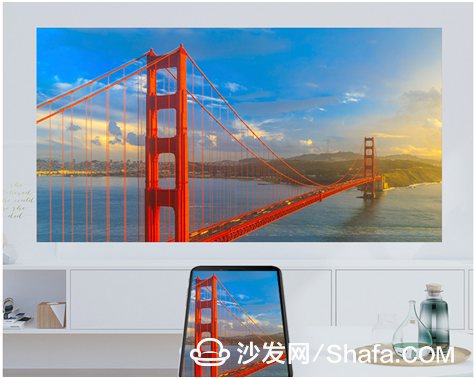 Multi-screen Interactive Era
Meanwhile, the proliferation of other screens has not significantly impacted the annual sales of 55 million TV sets. Why? Because behind the rise of screens lies the increased use of those screens, driving demand—not that TVs are becoming obsolete but that better options are available for specific applications. This shift results from the interaction between multiple technological advancements.
Therefore, Zhang Weidong believes that the current projection market stands at 1 million units, while TV sales reach 55 million. The so-called "non-essential" understanding of projection is not the real issue. The real question is what consumers need, what offerings are provided, and how technology and products are improving. Inciting demand can potentially unlock bigger markets—millions, tens of millions, or even larger ones. In this regard, the decentralized application of "screens" has been insufficiently explored by traditional projection circles, which has motivated newcomers like Xiaomi, Laimi, and Hisense.
In this context, Zhang Wei, Director of Marketing for Micro Whales, pointed out that more and more members of the "micro-whale generation" are flooding into and settling in Tier 1 and 2 cities. Driven by dreams, many young people live in cramped spaces and frequently relocate. After a day’s work, they return home to enjoy movies, games, and music. If the current projection market is experiencing a transition from "flat" to "flattened," it provides a larger environmental space for micro-projections; the "micro-whale generation" shapes the actual market demand groups. This demographic comprises individuals interested in micro-whale projection, TV, VR, and other innovations.
Multi-screen Interactive Era
Meanwhile, the proliferation of other screens has not significantly impacted the annual sales of 55 million TV sets. Why? Because behind the rise of screens lies the increased use of those screens, driving demand—not that TVs are becoming obsolete but that better options are available for specific applications. This shift results from the interaction between multiple technological advancements.
Therefore, Zhang Weidong believes that the current projection market stands at 1 million units, while TV sales reach 55 million. The so-called "non-essential" understanding of projection is not the real issue. The real question is what consumers need, what offerings are provided, and how technology and products are improving. Inciting demand can potentially unlock bigger markets—millions, tens of millions, or even larger ones. In this regard, the decentralized application of "screens" has been insufficiently explored by traditional projection circles, which has motivated newcomers like Xiaomi, Laimi, and Hisense.
In this context, Zhang Wei, Director of Marketing for Micro Whales, pointed out that more and more members of the "micro-whale generation" are flooding into and settling in Tier 1 and 2 cities. Driven by dreams, many young people live in cramped spaces and frequently relocate. After a day’s work, they return home to enjoy movies, games, and music. If the current projection market is experiencing a transition from "flat" to "flattened," it provides a larger environmental space for micro-projections; the "micro-whale generation" shapes the actual market demand groups. This demographic comprises individuals interested in micro-whale projection, TV, VR, and other innovations.
 Little Whale Projection F1 and Chinese New Song Sound Match
For this group, an 80-inch LCD is not only cumbersome but also expensive. A better option is a micro-casting smart theater. The Micro Whale K1 is positioned at 80 inches, achieving "one-step access" to display, audio, voice, content, smart, web, mobile, and portable experiences. Addressing this need solves the problem elegantly. This year, Micro Whale launched the brighter F1, enhancing the experience of expanding micro-devices to 150 inches—the K1 represents the "extreme satisfaction" of the "micro-whale," while F1 embodies the "light luxury boutique" for the "micro-whale generation."
"No Subversion" and Looking Ahead
Smart micro-projections and laser TVs are gaining favor with more giants, many of whom are outsiders to the industry. However, the projection industry has yet to experience true phenomenal development. Behind this lie certain entrenched norms. Zhang Weidong highlighted that to break through the current stagnation, at least three barriers must be overcome.
First, ideologically, the traditional projection circle is highly conservative. It focuses on maintaining profits and avoiding external competition. In other words, the projection panel tradition resembles "land-holding," prioritizing coupling and tacit understanding over full innovation and free competition. This approach hinders market development.
Secondly, in terms of conduct rules, the projection industry has a long history, forming tightly-knit supply chains, brands, and channels. Any innovation risks destabilizing vested interest structures, making implementation difficult. Over time, inertia and resistance to change have solidified industry rules.
Thirdly, on the technical front, the projection industry is overly focused on "not disrupting the status quo." Rather than embracing innovation, the traditional projection circle maintains existing structures to preserve profit distribution. This has led to a stagnant application form and technical direction for this "screen."
Little Whale Projection F1 and Chinese New Song Sound Match
For this group, an 80-inch LCD is not only cumbersome but also expensive. A better option is a micro-casting smart theater. The Micro Whale K1 is positioned at 80 inches, achieving "one-step access" to display, audio, voice, content, smart, web, mobile, and portable experiences. Addressing this need solves the problem elegantly. This year, Micro Whale launched the brighter F1, enhancing the experience of expanding micro-devices to 150 inches—the K1 represents the "extreme satisfaction" of the "micro-whale," while F1 embodies the "light luxury boutique" for the "micro-whale generation."
"No Subversion" and Looking Ahead
Smart micro-projections and laser TVs are gaining favor with more giants, many of whom are outsiders to the industry. However, the projection industry has yet to experience true phenomenal development. Behind this lie certain entrenched norms. Zhang Weidong highlighted that to break through the current stagnation, at least three barriers must be overcome.
First, ideologically, the traditional projection circle is highly conservative. It focuses on maintaining profits and avoiding external competition. In other words, the projection panel tradition resembles "land-holding," prioritizing coupling and tacit understanding over full innovation and free competition. This approach hinders market development.
Secondly, in terms of conduct rules, the projection industry has a long history, forming tightly-knit supply chains, brands, and channels. Any innovation risks destabilizing vested interest structures, making implementation difficult. Over time, inertia and resistance to change have solidified industry rules.
Thirdly, on the technical front, the projection industry is overly focused on "not disrupting the status quo." Rather than embracing innovation, the traditional projection circle maintains existing structures to preserve profit distribution. This has led to a stagnant application form and technical direction for this "screen."
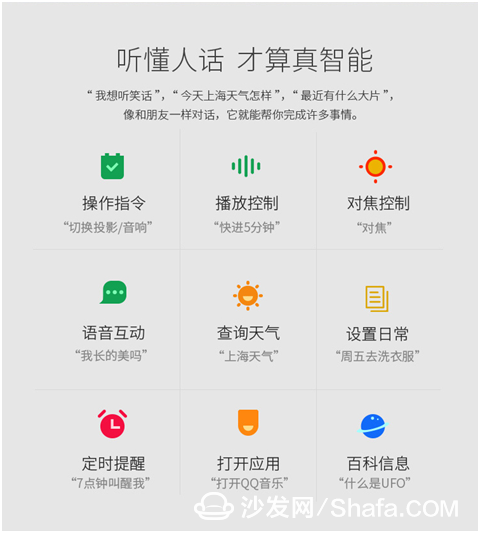 Intelligent projection understands people—it's the hard truth.
In general, "the traditional projection industry is a big conservative, incompatible with today's highly developed Internet information civilization." Zhang Weidong feels that the future of the projection industry does not lie in the hands of traditional operators because they have already "disengaged from the masses." However, these traditional players hold immense industry resources. This gap and imbalance present opportunities for new entrants (old players are complacent) and challenges for new entrants (old players are entrenched).
If the projection industry is to achieve a breakthrough, the key lies in "innovation and disruption of the existing industry structure." This includes not only technical and product form innovations but also innovations in industrial rules and market structures. "The projection circle has been stuck in the existing patterns for too long, lacking disruptive innovation, and it is hard to predict a bright future." Therefore, the ambition of the micro-whale is to gather the youth of the "micro-whale generation" and the most dynamic group in China to create a different world—comfortable, intelligent, and fun. Whether it's micro-whale TV, VR, or today's focus on projection, this concept applies.
So how can this comfortable and intelligent experience be achieved? Zhang Ying, Director of Marketing for Micro Whales, also believes that breaking free from the shadow of traditional projections leads to a new future. The new future must include the integration of "new life experiences." The latter is the cocktail-inspired ecosystem of micro-whale content: the grassroots team collaborates with platforms like Tencent, Alibaba, and Mango to introduce top-tier IPs; the middle layer consists of the core forces of CMC’s brother companies, including Canxing/Oriental Dream Factory/Noon sunshine; the top layer involves the design and exclusive content of the micro-whale, creating personalities and differences... Layered experiences akin to sipping a cocktail allow users to access the best content at the lowest cost, seamlessly integrated into sophisticated hardware. "This is an open worldview that distinguishes itself from the conservative circle culture of traditional projections; it is a product of liberal thought that differs from the traditional projection's conservatism." Open and free—this is the young whale projection.
The "flattened" world allows users to decide what constitutes a "boutique."
Challenging the "lazy conservative tradition" in the projection industry, Zhang Weidong believes that "now is the best time."—"The Internet has a concept called the world is flat." This is where the hope for projection industry innovation lies. Under the traditional projection industry pattern, consumer demand is suppressed. Manufacturers and channels control discourse, interpretation, and supply rights, leaving consumers with limited choices within predetermined industry boundaries. They cannot even step into the "cells" of their regional suppliers.
Now, through the Internet economy, consumers can see the whole world. The monopoly on technology, knowledge, information, and supply maintained by the industry system has been shattered. Hence, the micro-whale F1 became an explosive hit during the 618 JD Shopping Festival. On the first day of sales, it ranked No.1 and sold out multiple times, receiving 100% positive reviews. This was unexpected for Micro Whale. Consumer cognition of projection has changed, perceptions have evolved, and the ability to judge their own needs has been revolutionized.
In the traditional projection industry, the consumer market depends on parameters and prices. Consumers truly understand what they need. This is the great opportunity brought by the "flattened Internet world."
In this regard, the strategy of Micro Whales is to align with consumer interests, be transparent to consumers, and continuously provide better products and services to improve their lives and experiences. This is the only correct path to opening up the industry's development.
Shen Yurui, Chief Industrial Designer of Micro Whale Projection, believes that "future life is not just about technology—the significance of technology as a physical form must combine with the individual differences of experience, meaning that demand itself becomes highly artistic. Combining numbers and information with subjective experience, a brand-new 'screen' era has arrived, relying on creativity and innovation."
This does not mean that the value of television has disappeared or been replaced. Instead, it shows its diversity, fusion, and collaboration. That is, going to the center and then flattening. In this era, consumers will re-examine the positioning of science and technology, using art differences and cultural experiences as new benchmarks. Therefore, Micro Whales have established three clues to meet consumer demand: advances in hard technology, sublimation of soft creativity, and integration of content and multiple "screen" values. This is the big strategic logic of the micro-whale projection.
However, the "flattened" world is not only an opportunity but also a challenge. Creating a product fully recognized by consumers is no easy feat. In terms of product creation, aside from the "cocktail" logic mentioned earlier, Micro Whales also understand and refine their products.
"Quality requires understanding the needs of the product first, then realizing them." For example, why does the small whale K1 have a 45mm 8W dual-horn design, supporting Dolby sound and DTS decoding, Hi-Fi-level sound effects? Because Micro Whales found that young people's entertainment isn't just about pictures but also sound, and often, sound is a separate demand. However, K1's goal is to maximize the portable experience, so it must have Bluetooth/WiFi audio—this might seem to increase costs and functionality from a micro-projection standpoint, but from a user's perspective, it eliminates the need for additional equipment, achieving true "convenience" and "extreme effects."
Intelligent projection understands people—it's the hard truth.
In general, "the traditional projection industry is a big conservative, incompatible with today's highly developed Internet information civilization." Zhang Weidong feels that the future of the projection industry does not lie in the hands of traditional operators because they have already "disengaged from the masses." However, these traditional players hold immense industry resources. This gap and imbalance present opportunities for new entrants (old players are complacent) and challenges for new entrants (old players are entrenched).
If the projection industry is to achieve a breakthrough, the key lies in "innovation and disruption of the existing industry structure." This includes not only technical and product form innovations but also innovations in industrial rules and market structures. "The projection circle has been stuck in the existing patterns for too long, lacking disruptive innovation, and it is hard to predict a bright future." Therefore, the ambition of the micro-whale is to gather the youth of the "micro-whale generation" and the most dynamic group in China to create a different world—comfortable, intelligent, and fun. Whether it's micro-whale TV, VR, or today's focus on projection, this concept applies.
So how can this comfortable and intelligent experience be achieved? Zhang Ying, Director of Marketing for Micro Whales, also believes that breaking free from the shadow of traditional projections leads to a new future. The new future must include the integration of "new life experiences." The latter is the cocktail-inspired ecosystem of micro-whale content: the grassroots team collaborates with platforms like Tencent, Alibaba, and Mango to introduce top-tier IPs; the middle layer consists of the core forces of CMC’s brother companies, including Canxing/Oriental Dream Factory/Noon sunshine; the top layer involves the design and exclusive content of the micro-whale, creating personalities and differences... Layered experiences akin to sipping a cocktail allow users to access the best content at the lowest cost, seamlessly integrated into sophisticated hardware. "This is an open worldview that distinguishes itself from the conservative circle culture of traditional projections; it is a product of liberal thought that differs from the traditional projection's conservatism." Open and free—this is the young whale projection.
The "flattened" world allows users to decide what constitutes a "boutique."
Challenging the "lazy conservative tradition" in the projection industry, Zhang Weidong believes that "now is the best time."—"The Internet has a concept called the world is flat." This is where the hope for projection industry innovation lies. Under the traditional projection industry pattern, consumer demand is suppressed. Manufacturers and channels control discourse, interpretation, and supply rights, leaving consumers with limited choices within predetermined industry boundaries. They cannot even step into the "cells" of their regional suppliers.
Now, through the Internet economy, consumers can see the whole world. The monopoly on technology, knowledge, information, and supply maintained by the industry system has been shattered. Hence, the micro-whale F1 became an explosive hit during the 618 JD Shopping Festival. On the first day of sales, it ranked No.1 and sold out multiple times, receiving 100% positive reviews. This was unexpected for Micro Whale. Consumer cognition of projection has changed, perceptions have evolved, and the ability to judge their own needs has been revolutionized.
In the traditional projection industry, the consumer market depends on parameters and prices. Consumers truly understand what they need. This is the great opportunity brought by the "flattened Internet world."
In this regard, the strategy of Micro Whales is to align with consumer interests, be transparent to consumers, and continuously provide better products and services to improve their lives and experiences. This is the only correct path to opening up the industry's development.
Shen Yurui, Chief Industrial Designer of Micro Whale Projection, believes that "future life is not just about technology—the significance of technology as a physical form must combine with the individual differences of experience, meaning that demand itself becomes highly artistic. Combining numbers and information with subjective experience, a brand-new 'screen' era has arrived, relying on creativity and innovation."
This does not mean that the value of television has disappeared or been replaced. Instead, it shows its diversity, fusion, and collaboration. That is, going to the center and then flattening. In this era, consumers will re-examine the positioning of science and technology, using art differences and cultural experiences as new benchmarks. Therefore, Micro Whales have established three clues to meet consumer demand: advances in hard technology, sublimation of soft creativity, and integration of content and multiple "screen" values. This is the big strategic logic of the micro-whale projection.
However, the "flattened" world is not only an opportunity but also a challenge. Creating a product fully recognized by consumers is no easy feat. In terms of product creation, aside from the "cocktail" logic mentioned earlier, Micro Whales also understand and refine their products.
"Quality requires understanding the needs of the product first, then realizing them." For example, why does the small whale K1 have a 45mm 8W dual-horn design, supporting Dolby sound and DTS decoding, Hi-Fi-level sound effects? Because Micro Whales found that young people's entertainment isn't just about pictures but also sound, and often, sound is a separate demand. However, K1's goal is to maximize the portable experience, so it must have Bluetooth/WiFi audio—this might seem to increase costs and functionality from a micro-projection standpoint, but from a user's perspective, it eliminates the need for additional equipment, achieving true "convenience" and "extreme effects."
 Smart projection can also be a portable lifestyle artwork.
Of course, innovation must have boundaries. For instance, this octopus is somewhat exaggerated. When the original design of the micro-whale product was first proposed, it was suggested that "alienated modeling" would become a hit. However, during later discussions, everyone felt that "over-design" contradicted the spirit of "excellence" and "user-first experience"—a flashy feature and increased cost. Moreover, the weird modeling sacrificed the experience. This study concluded.
"Every design must be refined, superb, and practical." This is the product philosophy of the micro-whale: So the K1's central lens (an industry首创)—because most high-end private theater projectors are designed this way, this design is most conducive to screen positioning and body adjustments; it also has a 1-second autofocus regardless of cost, ensuring a clear picture even if moved; the more cost-effective highlights of F1 are mainly for the "micro-whale" 150-inch-level screen experience...
Smart projection can also be a portable lifestyle artwork.
Of course, innovation must have boundaries. For instance, this octopus is somewhat exaggerated. When the original design of the micro-whale product was first proposed, it was suggested that "alienated modeling" would become a hit. However, during later discussions, everyone felt that "over-design" contradicted the spirit of "excellence" and "user-first experience"—a flashy feature and increased cost. Moreover, the weird modeling sacrificed the experience. This study concluded.
"Every design must be refined, superb, and practical." This is the product philosophy of the micro-whale: So the K1's central lens (an industry首创)—because most high-end private theater projectors are designed this way, this design is most conducive to screen positioning and body adjustments; it also has a 1-second autofocus regardless of cost, ensuring a clear picture even if moved; the more cost-effective highlights of F1 are mainly for the "micro-whale" 150-inch-level screen experience...
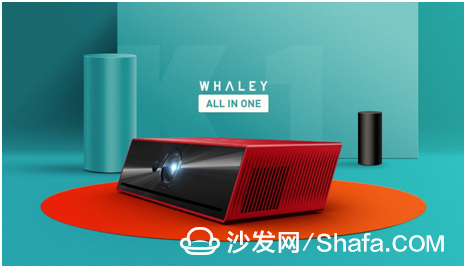 Innovative design has attitude.
"The design innovation must be 'something,' that is the 'brand story' that can really withstand consumer inspection." Shen Yurui strongly opposes "design for design, differences for differences, and even disregard for application experience and the nature of demand," placing the cart before the horse. This allows users to decide what a "boutique" is: All design and manufacturing, besides positive industrial chain processes, must even tolerate the "need to reverse" decomposition process from the user side. Then, the product of the micro-whale is born.
"Integrating and subdividing the times" and doing "nurseries"
"We are in a revolutionary era. This is an infinitely grand vision that we can't see any borders. Here, what do we do, how do we do it, and where do we go?" Zhang Weidong thinks, micro-projection or laser TV is no longer the protagonist that the micro-whale truly cares about. There is only one real protagonist in this game, which is "the torrent of consumer demand." Micro-projection, laser TV is just a little embellishment.
Zhang Weidong reviewed the process of creating "TV Cat," a "different" product that once swept through China. The idea of MoreTV is not based on technology. She is more concerned with consumer behavior. By helping consumers save one or two steps at a time, MoreTV became the first app to dominate smart TVs and smart boxes. The success of this concept fully illustrates the correctness of the theory of consumer demand.
The same is true for the story of micro-whales. From 0 to 1, micro-whales created the popularity of large-screen TVs in 2015, the most popular 55 inches—when 55-inch was not the market mainstream, but the micro-whale saw the display technology support capabilities and consumer demand driving the 55-inch mainstream, so the micro-whale chose to complete this revolution for the first time.
Innovative design has attitude.
"The design innovation must be 'something,' that is the 'brand story' that can really withstand consumer inspection." Shen Yurui strongly opposes "design for design, differences for differences, and even disregard for application experience and the nature of demand," placing the cart before the horse. This allows users to decide what a "boutique" is: All design and manufacturing, besides positive industrial chain processes, must even tolerate the "need to reverse" decomposition process from the user side. Then, the product of the micro-whale is born.
"Integrating and subdividing the times" and doing "nurseries"
"We are in a revolutionary era. This is an infinitely grand vision that we can't see any borders. Here, what do we do, how do we do it, and where do we go?" Zhang Weidong thinks, micro-projection or laser TV is no longer the protagonist that the micro-whale truly cares about. There is only one real protagonist in this game, which is "the torrent of consumer demand." Micro-projection, laser TV is just a little embellishment.
Zhang Weidong reviewed the process of creating "TV Cat," a "different" product that once swept through China. The idea of MoreTV is not based on technology. She is more concerned with consumer behavior. By helping consumers save one or two steps at a time, MoreTV became the first app to dominate smart TVs and smart boxes. The success of this concept fully illustrates the correctness of the theory of consumer demand.
The same is true for the story of micro-whales. From 0 to 1, micro-whales created the popularity of large-screen TVs in 2015, the most popular 55 inches—when 55-inch was not the market mainstream, but the micro-whale saw the display technology support capabilities and consumer demand driving the 55-inch mainstream, so the micro-whale chose to complete this revolution for the first time.
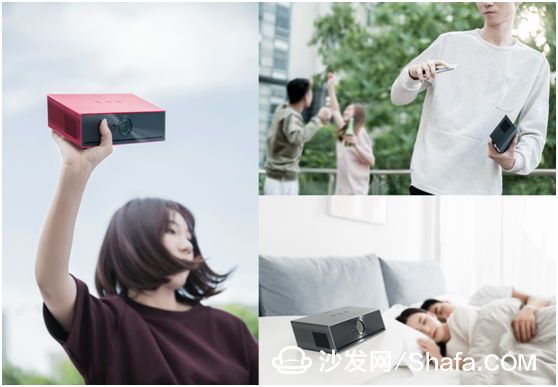 Young people's favorite entertainment screen
The same story took place with the micro-whale F1. A brand-new product, just listed, became a 618 explosion model and received 100% praise, relying on the micro-whale's first-to-market demand for 1200 brightness high-energy products. Regarding the birth of F1, the micro-whale also has a small story: VR solved the problem of close-to-close private screens, televisions achieved a 50-inch, 60-inch large screen, K1 is 80 inches-100 inches, so much larger sizes, such as 150 inches, what does the "micro-whale generation" choose? When this question was posed, many people thought this was a problem. Because as the screen gets bigger, the technical difficulty of the product grows exponentially. However, the micro-whale team decided to try and succeeded. Through research on the loss of optical efficiency of micro-projection technology and breakthroughs in the integration of high-efficiency light sources and heat-dissipation and noise-control technology, F1 was launched in the shortest time. The success of this product highlights the "though new but dare to fight and capable of fighting" of the small whale projection team.
In this regard, the industry even some people commented that "Zhang Weidong and Zhong Bo are both amateurs for the traditional projection industry, but they have played a high level of unplayable or even dared to play." In fact, cross-industry thinking, the cultural connectivity of the Internet, and a profound understanding of the changes of the times have become the starting point for the transformation of the projection circle. As one of the veterans of the industry changers, Pole Rice launched two new sub-brands in 2017, involved in children's projection, and a new business demand projection line, representing the trends and laws of the industry. "These attempts are not necessarily successful, but there is no chance of success without trying. This spirit is worthy of industry learning and respect."
Zhang Weidong pointed out that whether it is the micro-projection, laser TV industry, or the entire "screen" market, are faced with a huge era of proposition: integration and subdivision—one side content and experience as the center, the value of various screens intertwined to form a unified display market. This projection has a huge opportunity than any time in history. On the other hand, from the perspective of individual needs, differentiation has become the mainstream, and the application of situation and scene innovation has continued to develop, and the market has evolved based on the alienation of heterogeneous Internet values and the transformation of heterogeneous phases. Projection must absorb positive factors in the Internet, intelligence, and innovation.
This is a "great integration, big differentiation and parallel era" based on the Internet, intelligence, planarization, personalization, and creativity. The microwhales, who represent young people, are unwilling to follow this trend. They are going to be "goers who make waves" and "waves of speeding the boat" in the "hundreds of battles".
Young people's favorite entertainment screen
The same story took place with the micro-whale F1. A brand-new product, just listed, became a 618 explosion model and received 100% praise, relying on the micro-whale's first-to-market demand for 1200 brightness high-energy products. Regarding the birth of F1, the micro-whale also has a small story: VR solved the problem of close-to-close private screens, televisions achieved a 50-inch, 60-inch large screen, K1 is 80 inches-100 inches, so much larger sizes, such as 150 inches, what does the "micro-whale generation" choose? When this question was posed, many people thought this was a problem. Because as the screen gets bigger, the technical difficulty of the product grows exponentially. However, the micro-whale team decided to try and succeeded. Through research on the loss of optical efficiency of micro-projection technology and breakthroughs in the integration of high-efficiency light sources and heat-dissipation and noise-control technology, F1 was launched in the shortest time. The success of this product highlights the "though new but dare to fight and capable of fighting" of the small whale projection team.
In this regard, the industry even some people commented that "Zhang Weidong and Zhong Bo are both amateurs for the traditional projection industry, but they have played a high level of unplayable or even dared to play." In fact, cross-industry thinking, the cultural connectivity of the Internet, and a profound understanding of the changes of the times have become the starting point for the transformation of the projection circle. As one of the veterans of the industry changers, Pole Rice launched two new sub-brands in 2017, involved in children's projection, and a new business demand projection line, representing the trends and laws of the industry. "These attempts are not necessarily successful, but there is no chance of success without trying. This spirit is worthy of industry learning and respect."
Zhang Weidong pointed out that whether it is the micro-projection, laser TV industry, or the entire "screen" market, are faced with a huge era of proposition: integration and subdivision—one side content and experience as the center, the value of various screens intertwined to form a unified display market. This projection has a huge opportunity than any time in history. On the other hand, from the perspective of individual needs, differentiation has become the mainstream, and the application of situation and scene innovation has continued to develop, and the market has evolved based on the alienation of heterogeneous Internet values and the transformation of heterogeneous phases. Projection must absorb positive factors in the Internet, intelligence, and innovation.
This is a "great integration, big differentiation and parallel era" based on the Internet, intelligence, planarization, personalization, and creativity. The microwhales, who represent young people, are unwilling to follow this trend. They are going to be "goers who make waves" and "waves of speeding the boat" in the "hundreds of battles".









Electric Motor For Metering Pump
Electric Motor For Metering Pump,Automatic Control Motor,Well-Designed Electric Motor,Alternating Current Motor Driver
Jiangsu Hengchi Motor Technology Co., Ltd , https://www.hcemotor.com